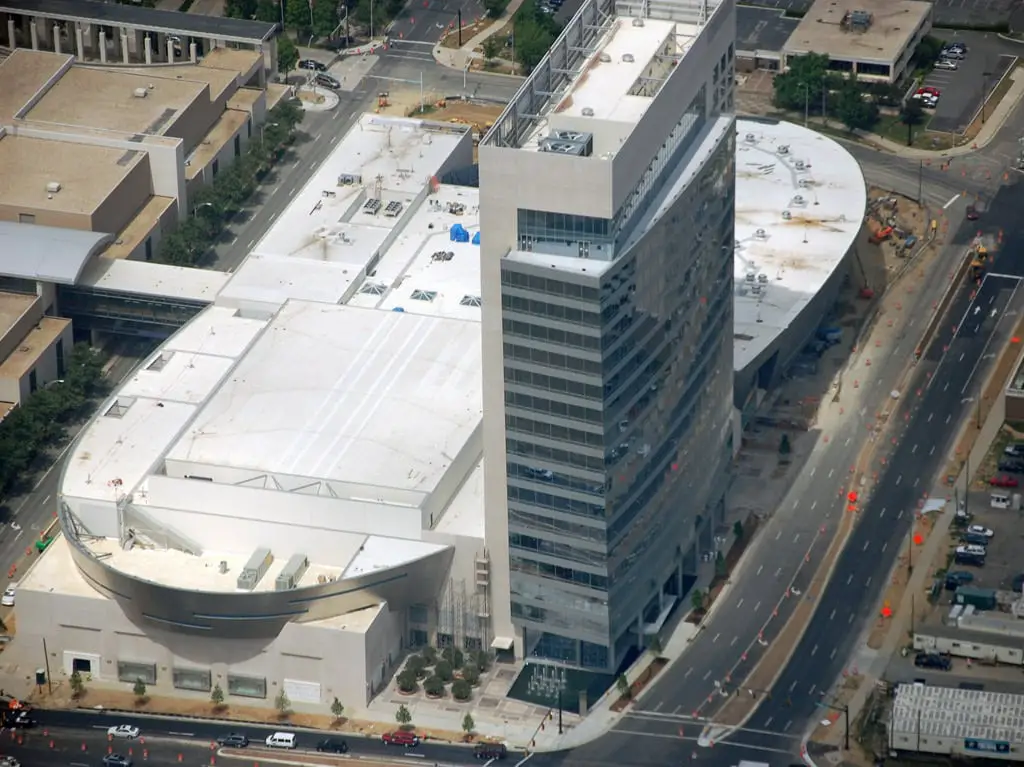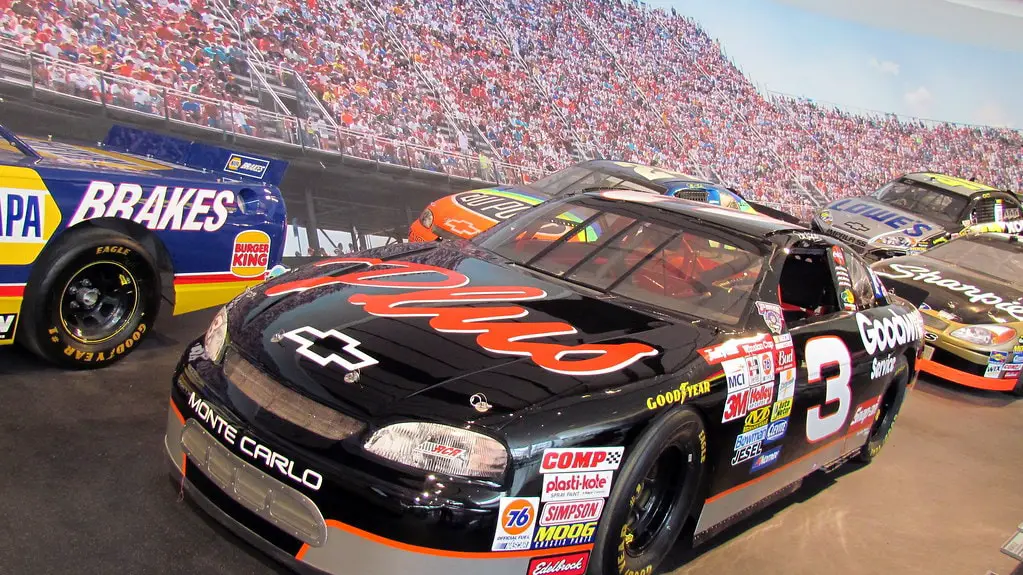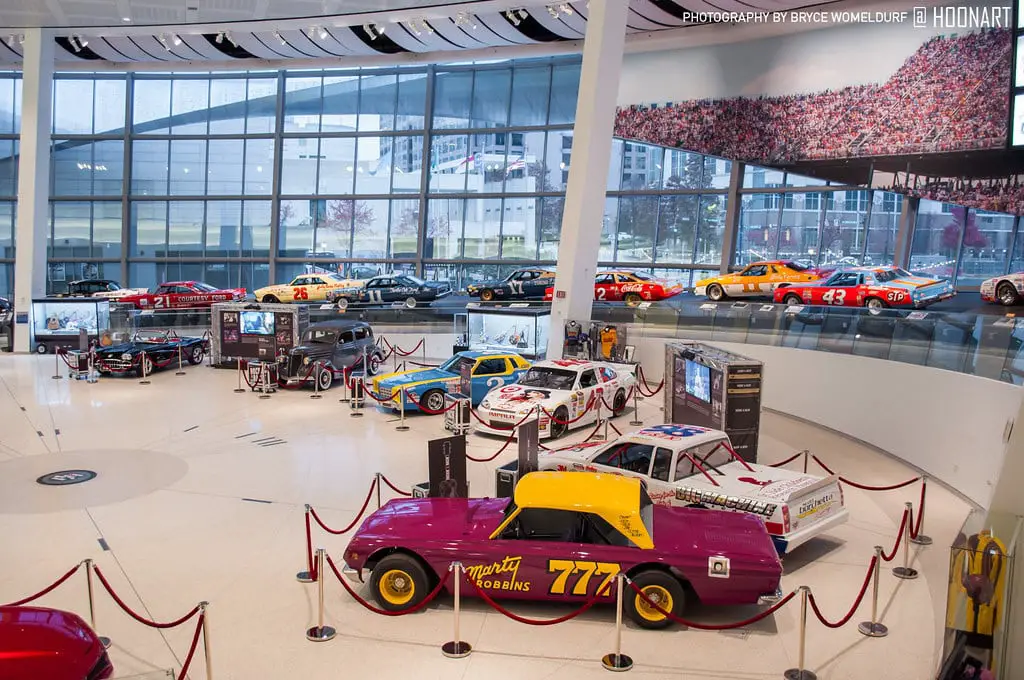The Concept and Foundation
NASCAR revealed plans for a Hall of Fame on March 6, 2006. They chose Charlotte, NC, due to its deep connections to stock car racing. The city boasts many NASCAR offices and teams, making it the ideal location.
The groundbreaking ceremony took place on January 26, 2007. The project's total cost reached $160 million, with Pei Cobb Freed & Partners leading the design. The facility officially opened on May 11, 2010, aligning with the NASCAR Sprint All-Star Race.
The NASCAR Hall of Fame is located at 400 E. Martin Luther King Jr. Blvd. in Charlotte. It includes a 150,000-square-foot space and a 19-story office tower. The complex houses NASCAR-related offices and NASCAR Digital Media.
The opening featured notable events, such as the unveiling of Richard Petty's Plymouth Belvedere. This artifact symbolizes the rich history and heritage celebrated within the Hall of Fame.
The Construction
I remember when the construction of the NASCAR Hall of Fame kicked off in January 2007. The project, designed by Pei Cobb Freed & Partners, had a budget of $160 million.
Leslie E. Robertson Associates managed the structural engineering, ensuring the building could handle the load and unique architectural elements.
Interestingly, Zahner from Kansas City engineered and fabricated the stainless steel Möbius strip around the building. Completing this piece alone must have required a lot of coordination and expertise.
Inside, Little Diversified Architectural Consulting from Charlotte handled many design details, while LS3P Associates, Ltd. handled the office tower.
Site excavation and grading started on May 21, 2007. It was an experience to watch the site transform from dirt into a massive, functional space.
The building includes a 150,000 sq ft area and a 19-story office tower, which opened in May 2009. The office tower houses NASCAR-related offices, NASCAR Digital Media, and NASCAR's licensing division.
Buffalo Wild Wings partnered with the Hall of Fame in 2009, becoming its exclusive restaurant partner in Charlotte.
This added a commercial element to the space, attracting visitors who enjoyed dining and visiting the Hall of Fame. Overall, the construction phase seemed packed with milestones and collaboration among various firms.
The Location and Its Significance
Charlotte, NC, was an obvious choice for the NASCAR Hall of Fame due to its deep ties to stock car racing. The city is home to many NASCAR teams and businesses, creating what many call "NASCAR Valley."
The Hall of Fame is conveniently located in Uptown Charlotte, only 25 minutes south of the Charlotte Motor Speedway. This proximity adds to the appeal for racing enthusiasts exploring things to do in Charlotte, NC.
The bid for the Hall of Fame included support from various business leaders and NASCAR owner Rick Hendrick. The involvement of the local government, led by then-Mayor Pat McCrory, also played a crucial role.
The selection of Pei Cobb Freed & Partners to design the complex underscored the project's importance to the city.

The Hall of Fame's location near the Charlotte Convention Center is in a bustling city area. This strategic positioning helps draw visitors to town for conventions or other events.
The slogan used for Charlotte's bid, "Racing Was Built Here. Racing Belongs Here," perfectly captured why Charlotte deserved the Hall of Fame.
In addition to its racing heritage, the Hall of Fame's location in Uptown Charlotte makes it accessible via various public transit options, including the nearby 3rd Street/Convention Center station.
This accessibility ensures that locals and visitors can easily explore the Hall of Fame and immerse themselves in NASCAR history.
NASCAR Hall of Fame: Features and Attractions
The NASCAR Hall of Fame offers an array of attractions that engage visitors of all ages. The first floor boasts the High Octane Theater, where you can watch various NASCAR-related videos.
This theater is a great way to kick off a visit, providing a primer on what to expect throughout the Hall.
One of my favorite features is Glory Road. This exhibit includes a 33-degree banked ramp, mimicking the steep banks of Talladega Superspeedway.
It showcases 18 cars and relays 46 past and current tracks. Walking along this ramp feels like a trip through NASCAR history, with each vehicle telling its own story.
On the second floor, the Ceremonial Plaza offers an outdoor space with a large video screen. This area hosts various events and gives visitors a place to relax.
Another highlight is the Great Hall, also on this floor. Often compared to Times Square, it features a 14-by-18-foot video screen and rotating exhibits.
The third floor houses the Hall of Honor, which enshrines inductees in a 360-degree wall display. This area serves as the heart of the Hall of Fame.
Additionally, the floor includes racecar simulators provided by iRacing.com, which let visitors experience the thrill of driving a NASCAR racecar.

Exhibitions and Experiences
The NASCAR Hall of Fame offers various exhibitions that explore the sport's history and provide interactive experiences.
Heritage Speedway, located on the fourth floor, focuses on NASCAR's seven-decade history. This exhibit includes a glass-enclosed section filled with historic artifacts, giving a tangible connection to the past.
Inside NASCAR, an exhibit on the third floor simulates a week in the life of a NASCAR team. It takes you through race prep, inspection, practice, time trials, and the race itself.
This exhibit offers a behind-the-scenes look at the complexities of racing, something I find truly fascinating.
The Great Hall on the second floor often features rotating exhibits. These change regularly, ensuring there's always something new to see. One exhibit might highlight a specific era in NASCAR, while another might focus on a particular team or car.
The racecar simulators provided by iRacing.com are a must-try. They offer an immersive experience, letting visitors experience what it is like to drive a NASCAR racecar.
These simulators use real data from actual races, making the experience as close to real racing as possible.
The Hall of Fame Café and the Buffalo Wild Wings restaurant on-site offer convenient dining options. After exploring the exhibits, grabbing a meal without leaving the building is nice.
The combination of educational exhibits and interactive experiences visits the NASCAR Hall of Fame, both informative and entertaining.

Induction Process
The induction process for the NASCAR Hall of Fame is rigorous and detailed. To be eligible, drivers must have competed in NASCAR for at least ten years and have been retired for at least three years.
The rules changed slightly starting in 2015. Drivers who competed for 30 or more years in NASCAR-sanctioned competitions or reached 55 can be considered without waiting three years after retirement.
Non-drivers must have contributed to the sport for at least ten years. Some exceptions exist for those with shorter careers who made unique contributions.
The nominating committee selects the nominees, which includes NASCAR representatives, Hall of Fame Executive Director Winston Kelley, and track owners from major and historic short tracks.
After the nomination, a 48-member voting panel casts its votes. This panel includes media representatives, retired drivers, owners, crew chiefs, and the reigning NASCAR Cup Series champion.
They also consider a fan vote from NASCAR.com. Each year, the process culminates in the induction of a new class, honoring the best in the sport.
Recent Developments
Recently, the NASCAR Hall of Fame announced its 2025 class of inductees. Carl Edwards, Ricky Rudd, and Ralph Moody were inducted this year.
With 72 wins across all three national series, Edwards expressed surprise and gratitude for being selected. This year's voting panel also recognized the contributions of veteran Ricky Rudd and legendary team owner Ralph Moody.
In addition to these inductees, the Hall of Fame revealed the nominees for the 2025 class earlier in the year.
For the first time, names like Greg Biffle, Randy Dorton, and Jack Sprague appeared on the Modern Era ballot. The nomination process always generates excitement and anticipation among fans and sports participants.
The Hall of Fame continues to evolve, celebrating new inductees and updating exhibits to reflect the sport's history and ongoing developments.
It remains a hub for NASCAR enthusiasts, providing insights into the sport's past, present, and future. Honoring legends and engaging visitors with interactive experiences make the Hall of Fame a vibrant and dynamic destination.
